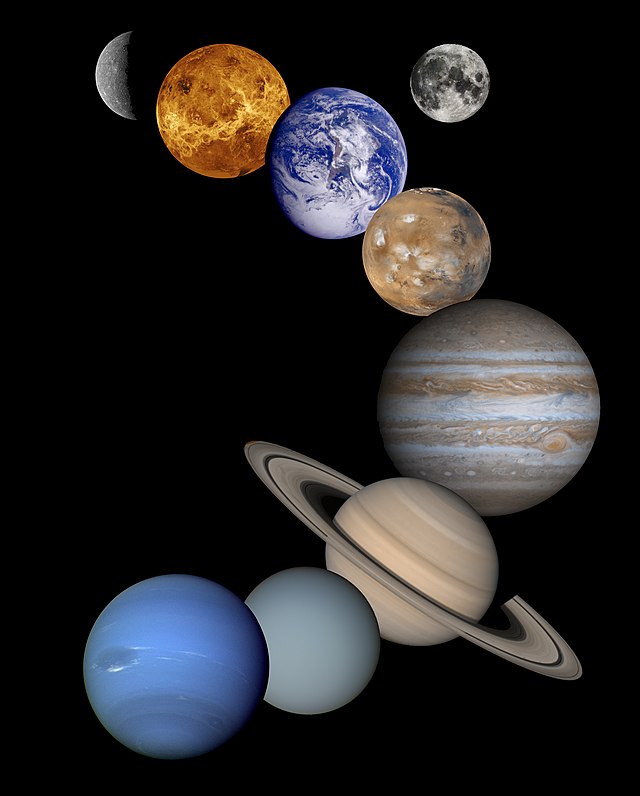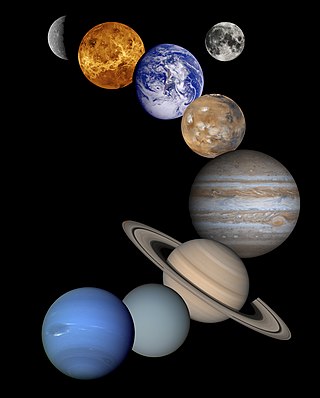| Planet type |
Description |
Example |
|---|
| Chthonian planet | An extrasolar planet that orbits close to its parent star. Most Chthonian planets are expected to be gas giants that had their atmospheres stripped away, leaving their cores. | TOI-849b (candidate) |
| Carbon planet | A theoretical terrestrial planet that could form if protoplanetary discs are carbon-rich and oxygen-poor. | PSR B1257+12 A, B and C (candidates) |
| Coreless planet | A theoretical planet that has undergone planetary differentiation but has no metallic core. Not to be confused with the Hollow Earth concept. | |
| Desert planet | A terrestrial planet with an arid surface consistency similar to Earth's deserts. | Mars |
| Gas dwarf | A low-mass planet composed primarily of hydrogen and helium. | GJ 1214 b |
| Gas giant | A massive planet composed primarily of hydrogen and helium. | Saturn, Jupiter, 70 Virginis b |
| Helium planet | A theoretical planet that may form via mass loss from a low-mass white dwarf. Helium planets are predicted to have roughly the same diameter as hydrogen–helium planets of the same mass. | |
| Hycean planet | A hypothetical type of habitable planet described as a hot, water-covered planet with a hydrogen-rich atmosphere. | TOI-270 d, K2-18b (candidates) |
| Ice giant | A giant planet composed mainly of 'ice'—volatile substances heavier than hydrogen and helium, such as water, methane, and ammonia—as opposed to 'gas' (hydrogen and helium). | Neptune, Uranus, Gliese 436 b, GJ 3470 b |
| Ice planet | A theoretical planet with a solid, icy surface. | OGLE-2005-BLG-390Lb |
| Iron planet | A planet that consists primarily of an iron-rich core with little or no mantle, such as Mercury. | K2-137b, LHS 3844 b (candidates) |
| Lava planet | A theoretical terrestrial planet with a surface mostly or entirely covered by molten lava. | Kepler-10b, Kepler-78b |
| Ocean planet | A theoretical planet which has a substantial fraction of its mass made of water. | Earth, Kepler-22b (candidate) |
| Protoplanet | A large planetary embryo that originates within protoplanetary discs and has undergone internal melting to produce differentiated interiors. Protoplanets are believed to form out of kilometer-sized planetesimals that attract each other gravitationally and collide. | PDS 70 b and c, AB Aurigae b |
| Puffy planet | A gas giant with a large radius and very low density which is similar to or lower than Saturn's. | TrES-4 |
| Soot planet | "Soot" in this context really means "refractory organic carbon”, an organic carbon compound rich in carbon, hydrogen, oxygen, and nitrogen that commonly goes by the acronym CHON.[7] | Titan (moon) |
| Steam world | A planet with an atmosphere made of steam H2O | GJ 9827 d |
| Super-puff |
A type of exoplanet with a mass only a few times larger than Earth's but with a radius larger than that of Neptune, giving it a very low mean density. | Kepler-51b, c and d |
| Silicate planet | A terrestrial planet that is composed primarily of silicate rocks. All four inner planets in the Solar System are silicon-based. | Mercury, Venus, Earth and Mars |
| Terrestrial planet | Also known as a telluric planet or rocky planet. A planet that is composed primarily of carbonaceous or silicate rocks or metals. | Solar System inner planets, TRAPPIST-1b, Kepler-37b |


